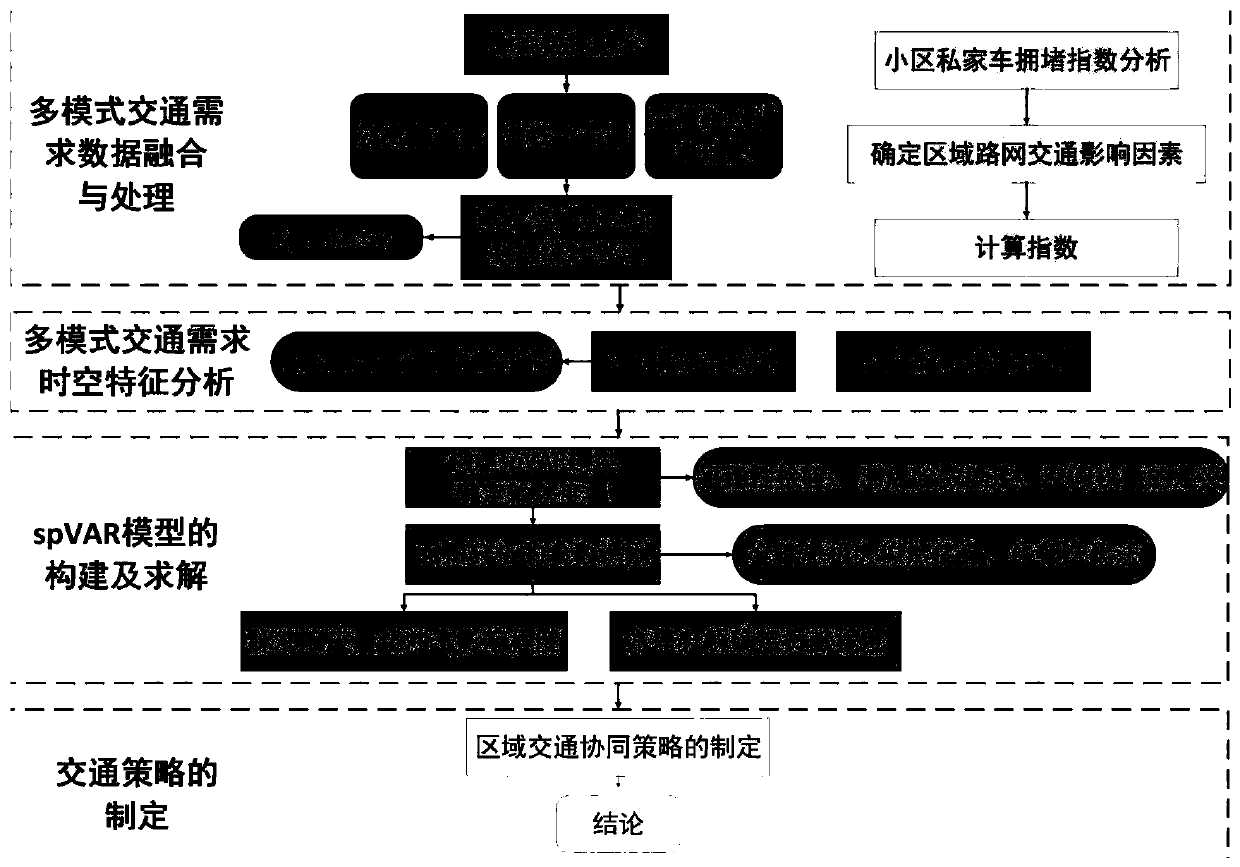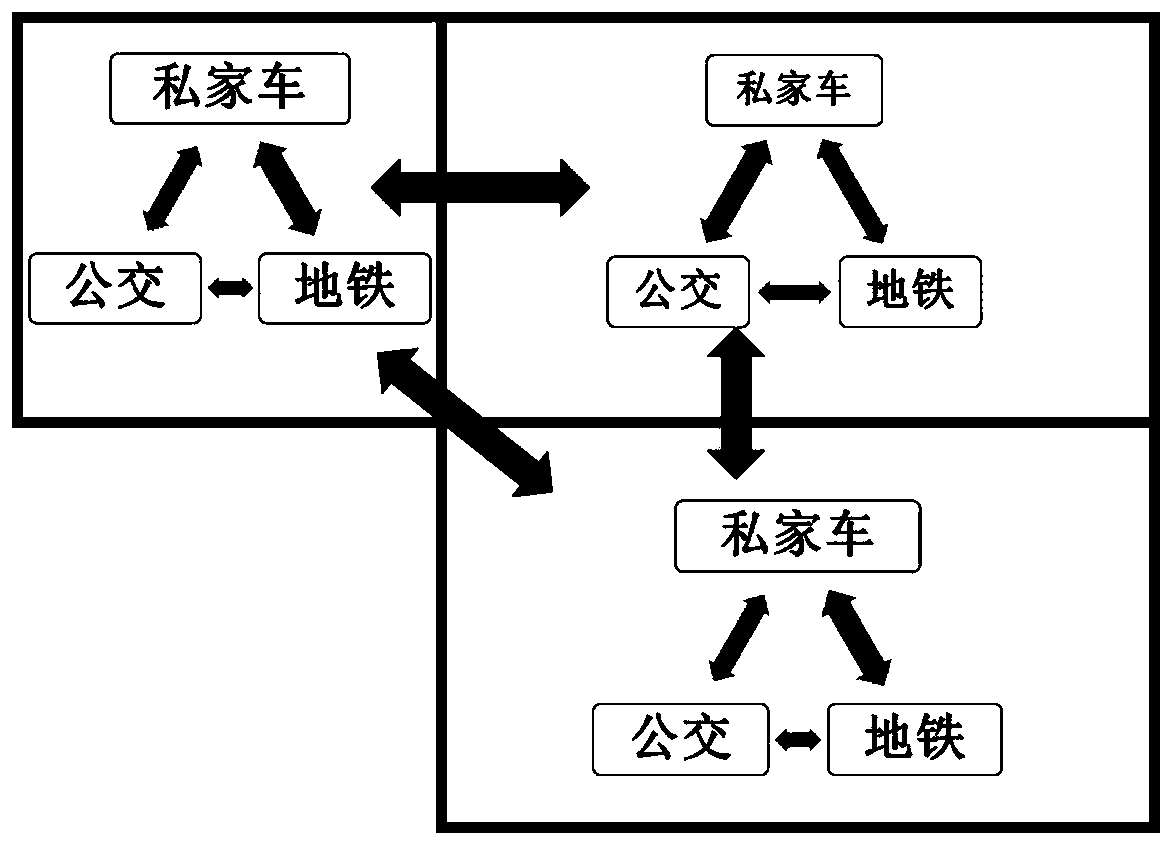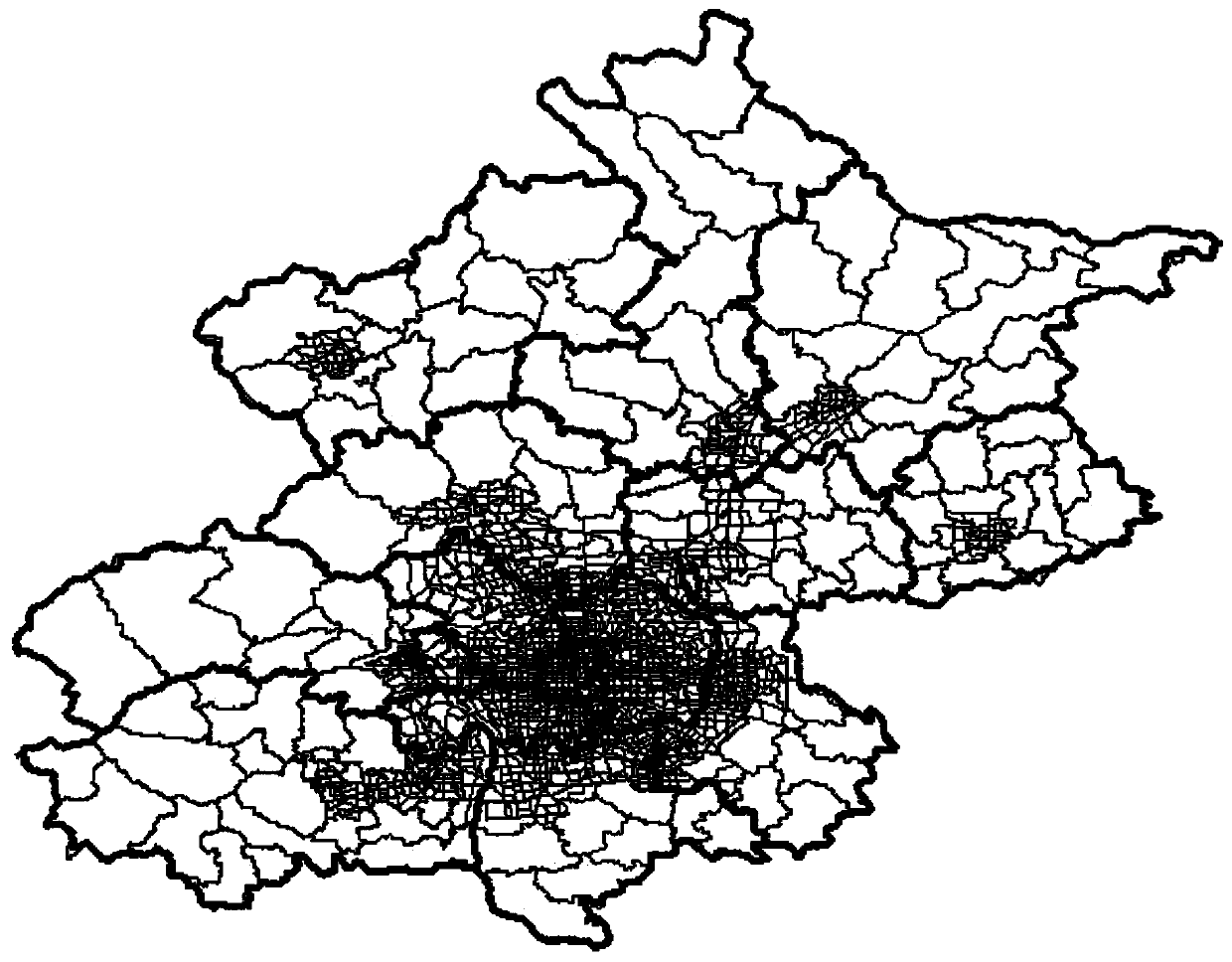A Multi-modal Traffic Demand Impact Analysis Method Based on Space Vector Autoregressive Model
An autoregressive model, a technology of traffic demand, applied in the direction of road vehicle traffic control system, traffic flow detection, traffic control system, etc., can solve the problem of inability to consider correlation, time-varying spatial characteristics, etc., and achieve the effect of quantifying the spatial spillover effect
- Summary
- Abstract
- Description
- Claims
- Application Information
AI Technical Summary
Problems solved by technology
Method used
Image
Examples
Embodiment
[0088] A multi-modal traffic demand impact analysis method based on a spatial autoregressive model is as follows:
[0089] 1), if Figure 4 As shown in the figure, for the two traffic communities near Xidan and Fuxingmen in Beijing, the number of subway stops, the number of buses boarding, and the road network congestion index of the selected traffic communities are calculated respectively. The results are shown as follows:
[0090] Table taz1 community subway, bus, road network data
[0091]
[0092] Table taz2 community subway, bus, road network data
[0093]
[0094]
[0095] 2), the stationarity test of the variables. The demand for three modes of transportation in two communities—the number of subway stops, the number of bus rides, and the private car congestion index—a total of six variables are used as the input variables of the model. The unit root test is performed on the six variables of the original data to quantitatively analyze the variable stationari...
PUM
 Login to View More
Login to View More Abstract
Description
Claims
Application Information
 Login to View More
Login to View More - R&D
- Intellectual Property
- Life Sciences
- Materials
- Tech Scout
- Unparalleled Data Quality
- Higher Quality Content
- 60% Fewer Hallucinations
Browse by: Latest US Patents, China's latest patents, Technical Efficacy Thesaurus, Application Domain, Technology Topic, Popular Technical Reports.
© 2025 PatSnap. All rights reserved.Legal|Privacy policy|Modern Slavery Act Transparency Statement|Sitemap|About US| Contact US: help@patsnap.com



